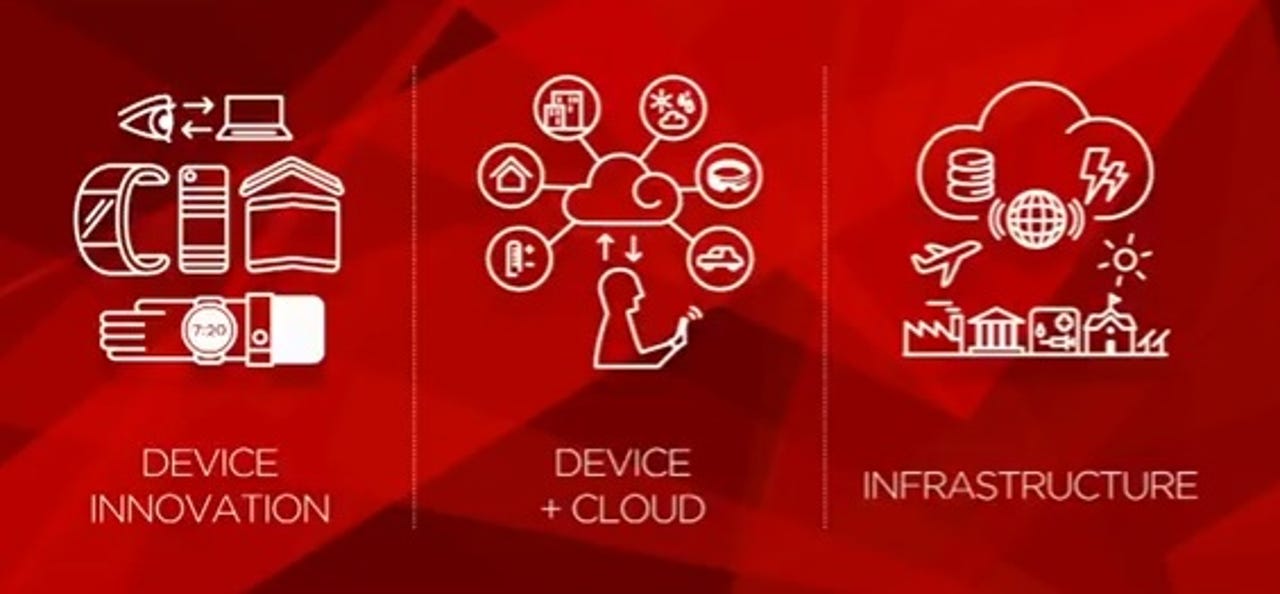Lenovo's big challenge: Connecting device to data center and cloud dots


Lenovo is best known for its devices such as its ThinkPad, Yoga, Moto devices and now its Phab2 Pro, which works in augmented reality, but CEO Yang Yuanqing is betting those end points can lead to data center and cloud leadership.
Yuanqing, during its keynote at Lenovo Tech World, talked devices, services, Internet of things and infrastructure. "Lenovo's advantage is integrating mobile and cloud and infrastructure," he said. "Devices will become entry points for exciting content and services."
Fair enough. But Lenovo is gunning for an integrated stack that would start with devices as well as the infrastructure behind the scenes. To put this concept into practice, Lenovo's plan would be akin to Apple using the iPhone and iPad as a lever to sell hyperconverged systems. We've also seen these attempts before. Dell and Hewlett-Packard (before the HPE and HP split) tried a similar strategy.
Lenovo Motorola: First peek at new mobile hardware
In the end, you wind up with silos and two halves of a business: Enterprise and consumer. This silo point was illustrated as Lenovo tried to make a segue from the Phab2 Pro to data center infrastructure and partnerships with the likes of Juniper. Lenovo took the hard turn that went from Google's Tango technology to a discussion about how there will be multiple clouds and companies will buy their own infrastructure (presumably from Lenovo).
After that enterprise detour, Lenovo dived into its Moto Z device and Moto Mods, or attachments that will snap into the smarpthone to create something new.
Previously: Lenovo launches Moto Z modular phone | Lenovo unveils Phab 2 Pro, a Tango device, for just $499 unlocked | Lenovo teases flexible screen technology as well as wraparound phones | Lenovo seeks new growth areas in a challenging PC market | Lenovo, Juniper outline strategic partnership, eye hyperconverged systems
Lenovo's game plan is to own its core hardware business as well as the connective glue between, people, Internet of things, networks, personal data and apps and services. "We will be deeply integrated," said Yuanqing. "More devices means more demand for infrastructure."
What's unclear is whether that infrastructure will be sold by Lenovo. The company has certainly lined up good partnerships with Juniper, SAP, Nutanix and others, but Lenovo will have to push the design needle. Lenovo should be commended for buying IBM's commodity server business and turning a profit, but it'll have to bring some of its design innovation on the front end to the gear behind the scenes.
At points during Yuanqing's talk there references to machine intelligence and other software. Lenovo almost sounded a bit like close partner Google. If Lenovo is going to complete it's device to infrastructure model it may need software to tie it all together.
That move is likely to be down the line. For now, the burden of proof will be on Lenovo to show it can turn front-end device demand into enterprise strength. Sales of the Phab2 Pro aren't likely to translate into server revenue anytime soon.
CNET: Motorola's new Moto Z ditches the headphone jack | Shatterproof Moto Z Force has a bigger battery, better camera | Lenovo Phab2 Pro: World's first Google Tango phone | Lenovo Phab2 Plus: A jumbo-screen phone with dual rear cameras | Motorola Moto Z and Moto Z Force vs. Samsung Galaxy S7, Nexus 6P and iPhone 6S